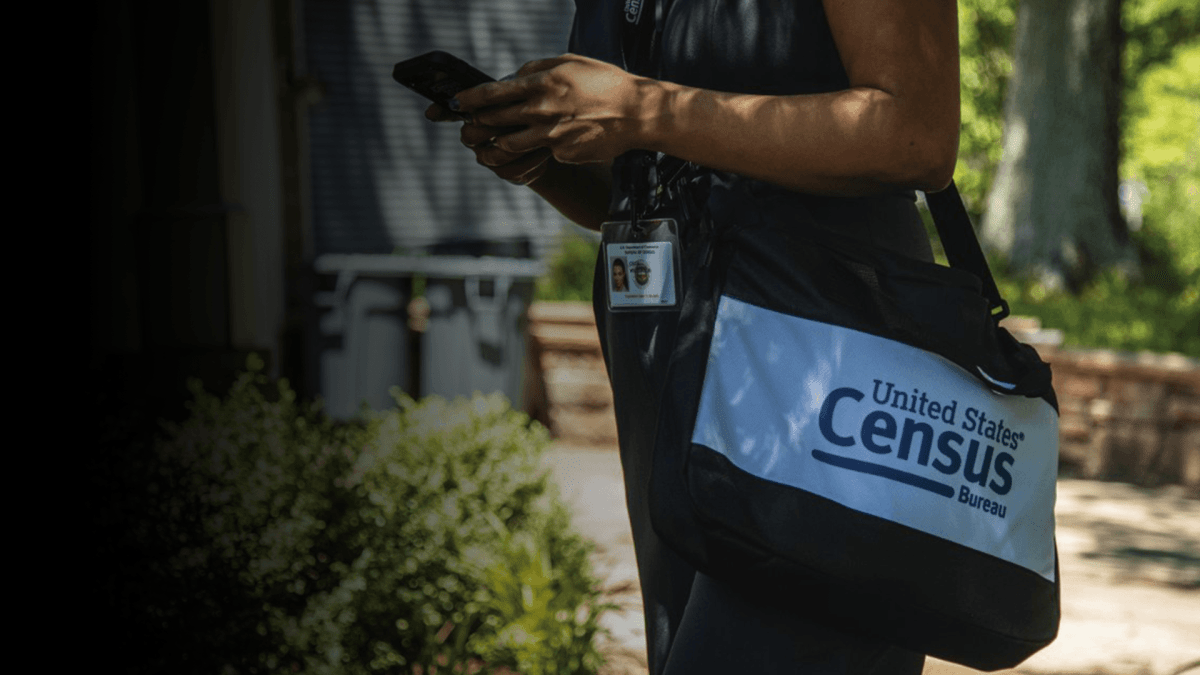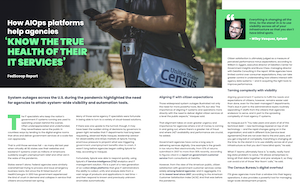- Sponsored
- Modernization
How agencies like Census Bureau are improving network visibility and operations

There is a lot of work behind the scenes to keep the nation’s government IT systems running. When those services fail – as many did last year during the height of the pandemic — it is critical to understand what triggers government websites to crash.
Last year, both state and federal agencies saw their sites overwhelmed by citizen needs for services. The shift in demand for digital services also underscores a greater concern: knowing the health of their IT systems.

Read the full report.
That is why leaders are increasingly looking at high-performance AIOps platforms “to collect, unify and analyze data from a vast range of products and applications in real time — and then respond to known and previously unknown anomalies automatically,” according to a recent FedScoop report.
“If there was one upside to the turmoil, it may have been the sudden string of decisions by governors to green-light remedies that IT departments had long been requesting,” says Wylie Vasquez, leadership advisor for observability and AIOps markets at Splunk, in the report.
“AIOPs platforms have become an essential tool for contextualizing large volumes of varied and ever-changing data” says the report, underwritten by Splunk. “What distinguishes AIOps platforms from more traditional analytics tools is their ability to automate routine practices and increase the speed and accuracy of issue recognition. That enables IT staffs to focus more of their attention on higher value needs.”
Splunk’s IT Service Intelligence (ITSI) analytics and IT management solution is a part of a new generation of so-called AIOps platforms that has been recognized by Gartner as a “visionary” application performance monitoring platform.
When systems or applications start to run slow, or issues arise, it usually requires bringing in large teams of people and multiple calls a day to troubleshoot the problem, Vasquez explained. “ITSI allows enterprises to bring all that data together and pre-analyze it, so they can avoid a lot of those ‘War Room’ calls.”
Additionally, the report illustrates how for agencies like the U.S. Census Bureau, ITSI provides a powerful tool for managing large-scale development projects.
When Census officials decided to conduct the 2020 decennial census online it was clear from the start that the bureau would require a whole new approach to their IT, security and data operations — not just to collect and process census data, but to reduce all kinds of technical risks and political concerns.
Vasquez explains the challenge agency leadership looked to address was how to create a single pane of glass view of the bureau’s existing mission-critical applications and platforms, including Oracle OEM and AppDynamics.
With Splunk’s ITSI AIOps platform and its event analytics dashboard, bureau IT administrators could readily identify or narrow the source of an issue across their technology stack, using an automated AI and machine learning approach.
One reason that agencies continue to turn to Splunk’s “Data-to-Everything” platform, according to Vasquez, is it’s unique strengths in being able to ingest and unify nearly any kind of data — structured or unstructured, including logs, metrics, text, wire, API or social-media — from nearly any tool and any system, on-premises or in the cloud. Once assembled and unified, it then becomes far easier to apply AI and ML to get ahead of problems before they happen.
Read more about harnessing data into a single platform to help your agency improve performance and user experience.
This article was produced by FedScoop and sponsored by Splunk.




